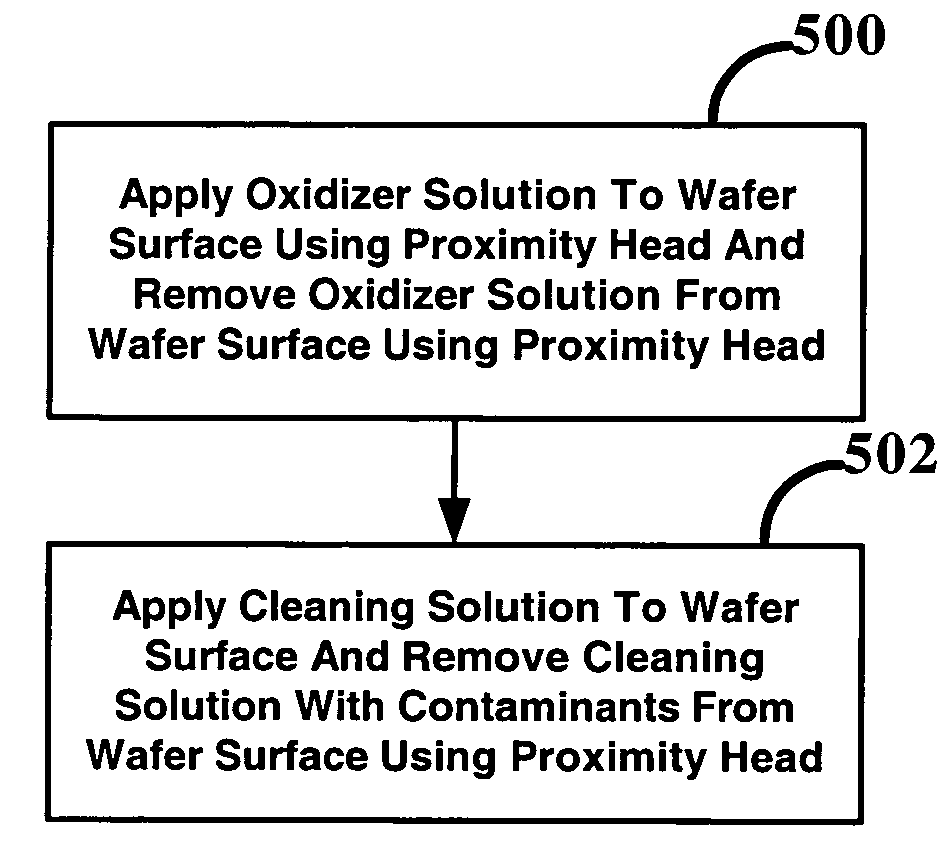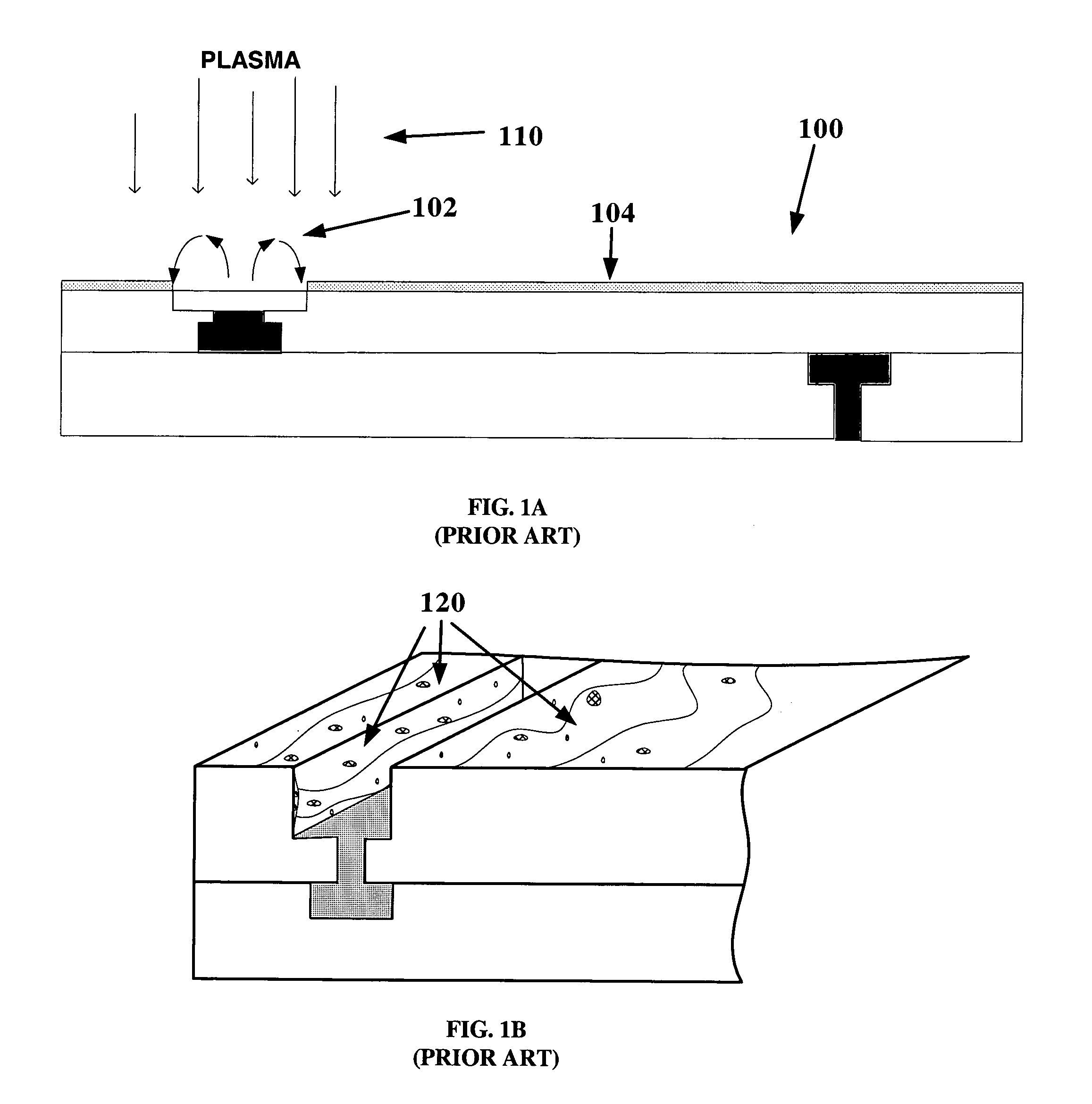Post etch wafer surface cleaning with liquid meniscus
a technology of liquid meniscus and etching wafers, applied in the direction of cleaning with liquids, cleaning processes and apparatuses, chemistry apparatus and processes, etc., can solve the problems of reducing reliability or even failure of ic, contaminated wafers, and complex process of semiconductor chip fabrication
- Summary
- Abstract
- Description
- Claims
- Application Information
AI Technical Summary
Benefits of technology
Problems solved by technology
Method used
Image
Examples
Embodiment Construction
[0022]An invention is described for apparatuses, systems, and methods for cleaning the surface of a semiconductor substrate. It will be obvious, however, to one skilled in the art, that the present invention may be practiced without some or all of these specific details. In other instances, well known process operations have not been described in detail in order not to unnecessarily obscure the present invention.
[0023]A semiconductor substrate can be made of any silicon-based material. In one exemplary embodiment, the substrate is a semiconductor wafer, which is a thin slice of semiconductor material, such as a silicon crystal, upon which microcircuits are constructed by diffusion and deposition of various materials. In this document, the terms semiconductor substrate and semiconductor wafer are used inter-changeably. What is disclosed by the embodiments herein is essentially a semiconductor substrate cleaning method that can be used with customized configurations of proximity heads...
PUM
| Property | Measurement | Unit |
|---|---|---|
| concentration | aaaaa | aaaaa |
| areas | aaaaa | aaaaa |
| area | aaaaa | aaaaa |
Abstract
Description
Claims
Application Information
 Login to View More
Login to View More - R&D
- Intellectual Property
- Life Sciences
- Materials
- Tech Scout
- Unparalleled Data Quality
- Higher Quality Content
- 60% Fewer Hallucinations
Browse by: Latest US Patents, China's latest patents, Technical Efficacy Thesaurus, Application Domain, Technology Topic, Popular Technical Reports.
© 2025 PatSnap. All rights reserved.Legal|Privacy policy|Modern Slavery Act Transparency Statement|Sitemap|About US| Contact US: help@patsnap.com



